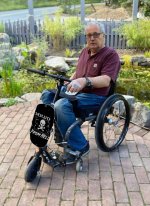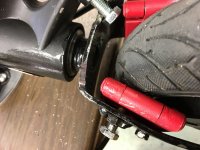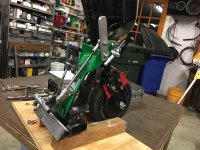Much time spent and some progress made. At least I'mmuch more familiar with what I have and what I want.
For the short term, I have 4 controllers that reverse, two 36V and two 48V (plus the original that doesn't reverse)
It seems that this humble $155 scooter has some sophisticated genes! It had digital communication (TXD and RXD busses) and variable braking control signal (analog).
The 4 reversing/cheap chinese motor controllers don't seem to have any of that! Although I can connect my 6 wire multi-function display & throttle so the throttle works and voltage is displayed, there is no speed, distance, or RPM function which sucks and is not satisfactory.
I am not understanding some of the functions or lack thereof, in the chinese aftermarket controllers.
Don't understand how the H Brake and L Brake circuits work except that if I ground the L Brake wire, it applies the brake. H Brake doesn't respond to power or ground. The control on the KXD scooter outputs a 0.77V-3.5V signal via a 3 wire JST plug.
The
[/img][/img]"three speed" plug on chinese analog controller: 3 wire, one is ground. Grounding one side lowers the speed limit; the other does nothing I can see.
As far as I can see, there's no way to get this controller communicating with my MFD (multi-function display). Someone previously posted a link to eBay sale of one that looks like mine. It has the 6 wire MFD/throttle (B+, ign, grnd, throttle sig, RXD,
TXD) and the display looks like mine, but all his controllers are only 250W. And I searched! And no reverse.
So help me if you can: brakes implementation, workaround or controller w/reverse that supports my MFD, or MFD that works w/chinese simple controllers AND has most of my functions (voltage, "fuel gauge" bars, speed, odometer, elapsed time, etc). It also has 3 speeds!
Is there a tutorial I missed ??





